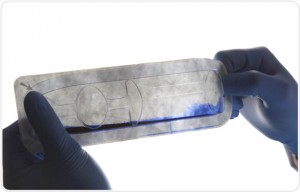Defining a Family of Products to Economize Package Testing
Does every medical device’s packaging system need to be tested separately?
Most of the medical device manufacturers STERIS work with have straightforward packing testing needs. Usually, they have a single product they wish to bring to market, and its product and packaging system needs to be validated. In this case, the test study is simple: we receive a set of package and device samples, and then put them through a course of testing to recognized standards.
But what happens when a company is looking to test multiple similar devices in the same packaging?
In these cases, it is worth considering how ISO 16775 (Packaging for terminally sterilized medical devices — Guidance on the application of ISO 11607-1 and ISO 11607-2) provides a path for creating a family of products.
Manufacturers faced with testing multiple devices with common packaging systems to ISO 11607 can lessen their testing workload by establishing a family of medical devices.
A group of medical devices can be considered a “family” if they:
- have the same intended use
- have the same packaging system
- have the same sterilization processes
- belong to the same class
- share the same design history file (DHF)
If using the same packaging system for multiple medical devices or a family of medical devices, then a rationale can be developed to establish a family of products. This rationale will determine which configuration(s) to validate and explain why the other configurations provide a less severe challenge to the packaging system. This can be achieved by using a risk analysis and defining the worst-case scenario in relation to:
- Configuration
- Sterile barrier system
- Sterile barrier system manufacturing process
 It is important to emphasize that while the products themselves may be different, a family of products is only viable for a single packaging system. A family of products allows for testing the packaging system fewer times than the total number of products within the family (the exact number of products is determined by risk analysis).
It is important to emphasize that while the products themselves may be different, a family of products is only viable for a single packaging system. A family of products allows for testing the packaging system fewer times than the total number of products within the family (the exact number of products is determined by risk analysis).
To establish a device family, the principle of worst case should be applied to the validation study, which means selecting the device, or set of devices, within the family that pose the greatest threat to the sterile barrier system. According to ISO 16775, “The worst-case is established by identifying the medical device(s) that apply the most stress to the packaging system.”
To ensure that the validation is meaningful for the entire sterile barrier system family, the worst-case configurations for the preformed sterile barrier family need to be identified.
Worst-case can apply to a variety of factors, including:
- Product weight
- Product shape and size
- Materials used
- Sterilization processes
- Sterile barrier (validation window)
- Manufacturing process
For example, a group of five similar medical devices may have one device consisting of a heavier material, additional parts, or fewer parts. In this case, worst-case configuration would dictate testing the packaging containing the heaviest product with the additional parts included. Again, the goal is to make sure that the packaging system is being subjected to the worst case out of a set of conditions during package validation.
The concept of family can also be applied to sterile barrier systems. To establish a family of sterile barrier systems, the risk factors will be different but may include:
- Total seal area
- Seal width
- Material surface area
- Sterilization method
- Manufacturing process
- Sterile barrier system size
Determining a worst case means assessing all of the manufacturing and sterilization processes, as well as the distribution cycle and shelf life, and then identifying the associated risks. Consideration should be given to all risk factors, which should then be prioritized and detailed in a documented rationale.
Such a risk analysis will produce a set of configurations to validate and, thus, an economized test design. In addition, a proper risk analysis will also help determine appropriate sample sizes.
The viability of establishing a family of products or sterile barrier systems should always be weighed against the potential risks to reliably producing devices that remain sterile until point of use. However, such an approach to packaging validation can satisfy the need for compliance with standards and product safety while also lowering the burden of testing costs.

